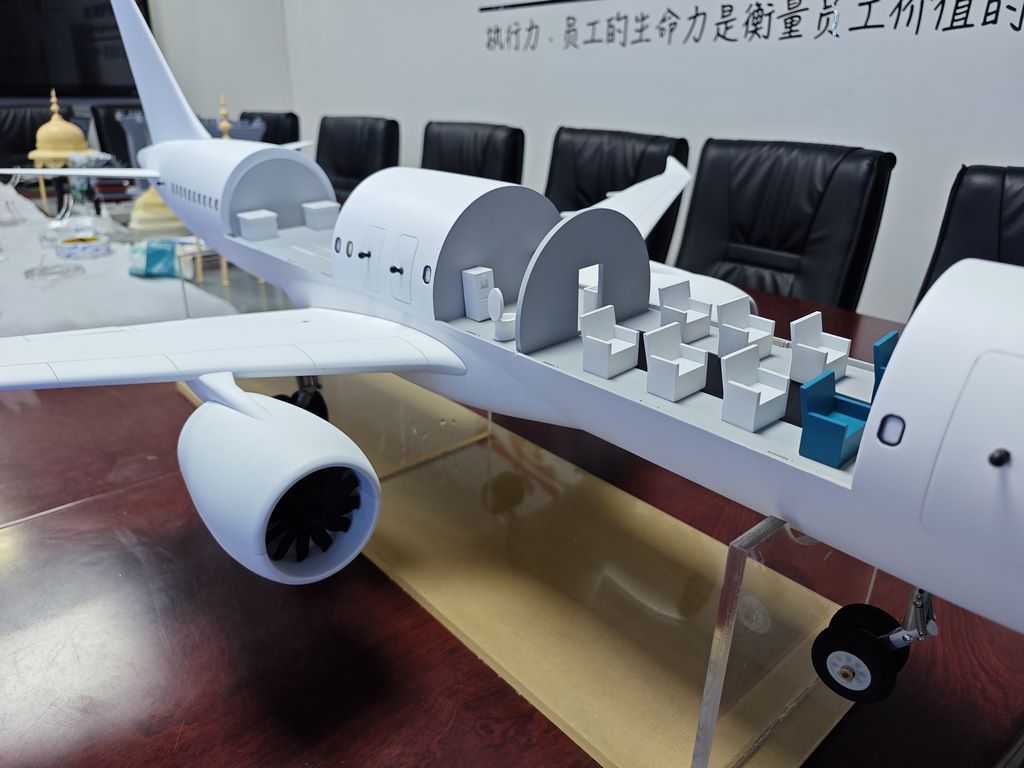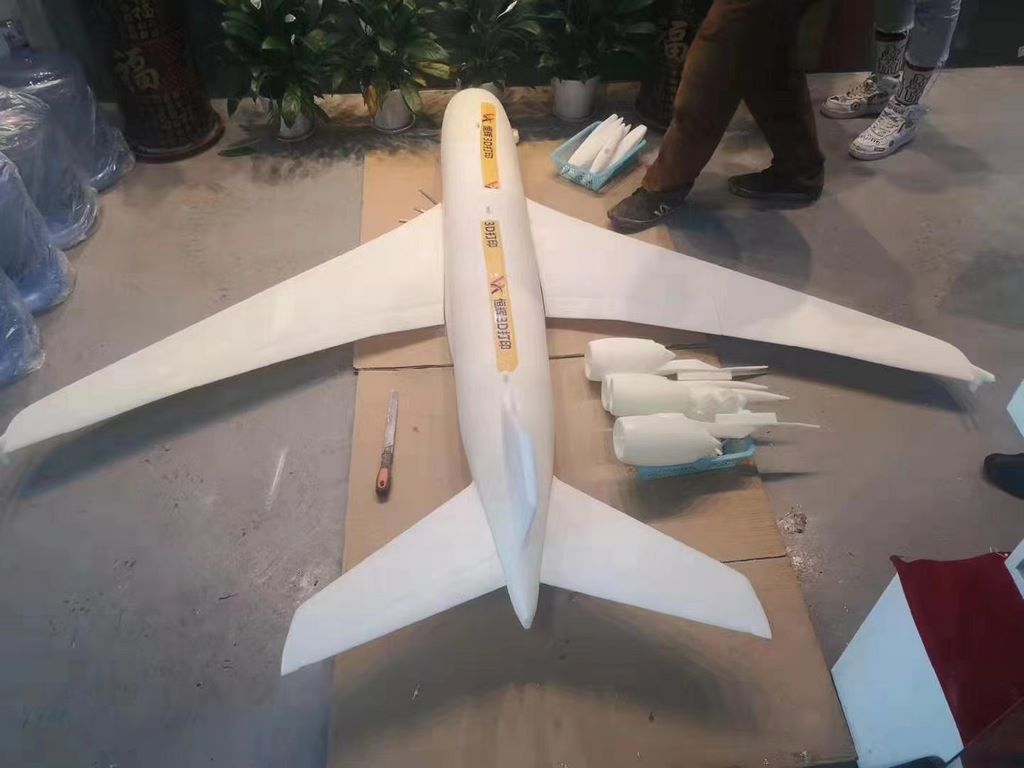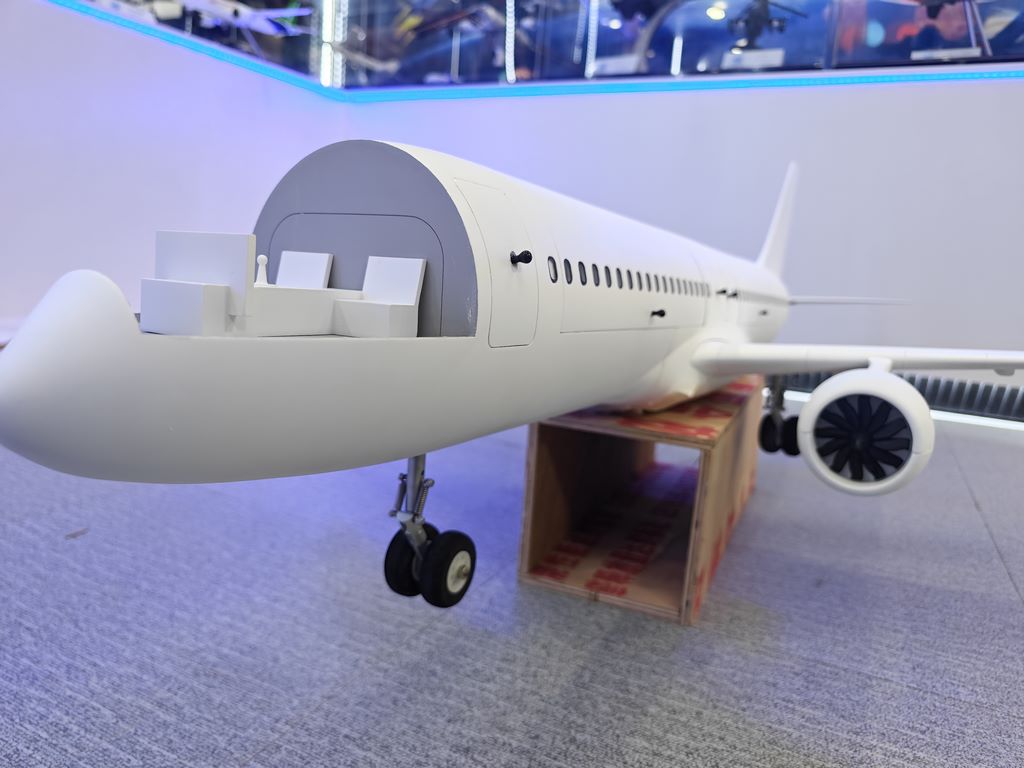Customized aircraft model manufacturer
1、 Material selection and structural design

main framework
Adopting a lightweight metal skeleton and wooden skin composite structure, the streamlined body is shaped through precision bending technology
The key connection parts are reinforced with micro metal parts to ensure structural stability while maintaining a simple appearance
Detail components
The engine blades have undergone special polishing treatment, resulting in a metallic luster on the surface
The cabin door and landing gear are designed to be movable, with hidden elastic mechanisms inside to achieve opening and closing functions
The transparent hatch cover is made of customized materials, and the internal etched lines simulate the real glass structure

2、 Layered production process
Modular assembly
The model is divided into independent modules such as the nose, fuselage, and wings, and fixed using traditional mortise and tenon joints combined with modern bonding techniques. Each module is embedded with internal support structures, and the external joints are finely filled and polished.
Detail presentation process
The surface rivets are manually implanted with metal wires and undergo special oxidation treatment to form a natural texture
The antenna and sensor are embedded with gold-plated metal wire, and the end is coated with fluorescent effect
Professional stickers are used to express the precision of metal plate splicing for skin seams

3、 Coloring and aging system
Multi layer coating process
The basic color layer is uniformly sprayed with a spray gun to ensure a smooth surface
Special coating achieves color separation through fine covering, and the edges are manually transitioned
The protective layer is made of matte material, simulating the oxidation effect of real aircraft surfaces
Dynamic effect processing
The engine area adopts gradient coating and local high-temperature discoloration treatment
Special techniques are used to simulate oil penetration marks on landing gear and other parts
The leading edge of the wing exhibits wind erosion and wear characteristics through dry scanning technology